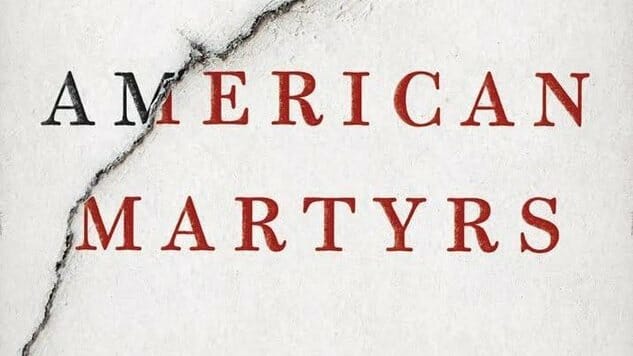An Act of Violence Highlights Both Sides of the Abortion Debate in Joyce Carol Oates’ A Book of American Martyrs

To describe Joyce Carol Oates’ latest novel as anything short of epic feels disingenuous, and yet it still falls short of capturing A Book of American Martyrs’ gravity. The narrative explores both sides of the national debate surrounding access to abortion, exposing the violence that may erupt when devotees of both causes meet. It’s also a testament to how fervor for a cause can inspire such devotion that families are destroyed.
On November 2, 1999, Luther Dunphy shoots and kills Dr. Gus Voorhees in the parking lot of a women’s center in Ohio. Voorhees, one of the most prominent abortion providers in the country, made a name for himself defending women’s rights and fighting for abortion access. Dunphy, a carpenter and Evangelical pro-life activist, views abortion as murder. Seeing an opportunity to end to what he views as Voorhees’ crime spree, Dunphy kills the man and waits to be arrested.
 The opening cast—a liberal doctor and a right-wing activist—appears cut and dry. But Oates complicates the narrative by crafting a multi-decade and intergenerational story of the two men and their families.
The opening cast—a liberal doctor and a right-wing activist—appears cut and dry. But Oates complicates the narrative by crafting a multi-decade and intergenerational story of the two men and their families.
Dunphy’s life is one of near constant tragedy, from his childhood with a distant father to his failed career as a minister to the death of his young daughter and his wife’s subsequent battle with depression. He’s a man grasping at control that always eludes him, who uses religion as a source of comfort against the battering tide that has been his life. But he’s also a man with deeply misogynistic views—a man who sexually assaulted a young woman when he was in high school and who holds wife’s sexuality against her.
-

-

-

-

-

-

-

-

-

-

-

-

-

-

-

-

-

-

-

-

-

-

-

-

-

-

-

-

-

-

-

-

-

-

-

-

-

-

-

-








































